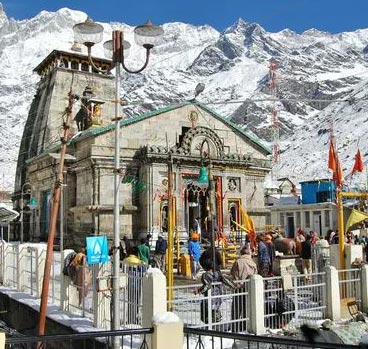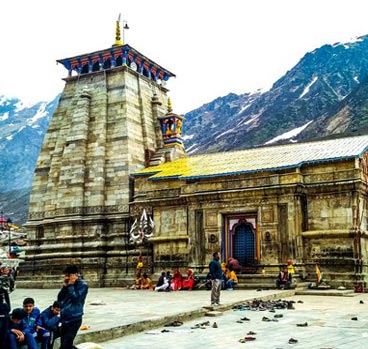Best Time to Travel to Chardham
Char Dham in Uttarakhand, also known as Chota Char Dham, carries a great spiritual existence on the hilly landscapes of Devbhoomi Uttarakhand. Timing is a crucial aspect when it comes to embarking on the pilgrimage to Char Dham shrines - Yamunotri, Gangotri, Kedarnath and Badrinath. The reason is that the doors of these holy shrines are closed during the winter season from November to April due to thick layers of snow covered everywhere. Moreover, during the monsoon season, there are high risks of floods and landslides, which makes it dangerous to take the holy sojourn from July to September.
The dates of closing and opening of the Char Dham temple doors are fixed and follow the same dates every year. The gates of the four shrines are closed on the next day of Bhai Dooj and reopen on the day of Akshaya Tritiya. Being at a high altitude, the weather remains pleasant and comfortable even during the summer season in all four Dhams. To craft a perfect tour plan for Char Dham, Do Dham, or Ek Dham, one must acknowledge a detailed overview of the seasonal patterns.
Suitable Months - May to June are the best time to plan for the Char Dham Yatra.


A Comprehensive Analysis of the Best Time to Visit Char Dham
Summer (April to June) - As the snow-covered winter season concludes, the arrival of summer ushers in the peak period for pilgrim visits. Given the high altitude, it is advisable for visitors to carry warm and woolen clothing, as temperatures drop significantly in the evenings, even during the summer months.
Monsoon (July to September) - The Garhwal region experiences significant rainfall during the monsoon season, making it an unsuitable time for the Char Dham pilgrimage due to the high risk of landslides and floods, which may result in travelers being stranded. Additionally, helicopter services are often suspended during this period. However, the weather becomes favorable for the pilgrimage from mid-September to mid-November.
Winter (October to March) - The onset of November heralds the cold and chilly winter season in the Garhwal region. The period from mid-September, following the monsoon, until Bhai Dooj, when the Char Dham Yatra concludes, is marked by moderately cool weather, which many devotees find ideal for embarking on the sacred pilgrimage. Once the Char Dham temples close, the entire region remains blanketed under thick layers of snow until March.
A tabular representation for easy planning for Char Dham Yatra
| Months | May | June | July | August | September | October |
| Temperature | 20℃-35℃ | 20℃-35℃ | 20℃-35℃ | 15℃-25℃ | 10℃-20℃ | 5℃-15℃ |
| Weather Condition | Moderate climate | Moderate climate | Monsoon rains | Monsoon rains | Humid with post-monsoon rains | Pleasant climate |
| Tourism season | Peak season | Peak season | Off-season | Off-season | Shoulder season | Shoulder season |
| Devotee Density | High footfalls | High footfalls | Moderate footfall | Moderate footfall | Above moderate footfall | Above moderate footfall |
| Expenses | Hiked rates | Hiked rates | Lowered rate | Lowered rate | Reasonable rates | Reasonable rates |
| Opening Date of Char Dham | On the day of Akshaya Tritiya |
| Closing Date of Char Dham | On the next day of Bhai Dooj |


